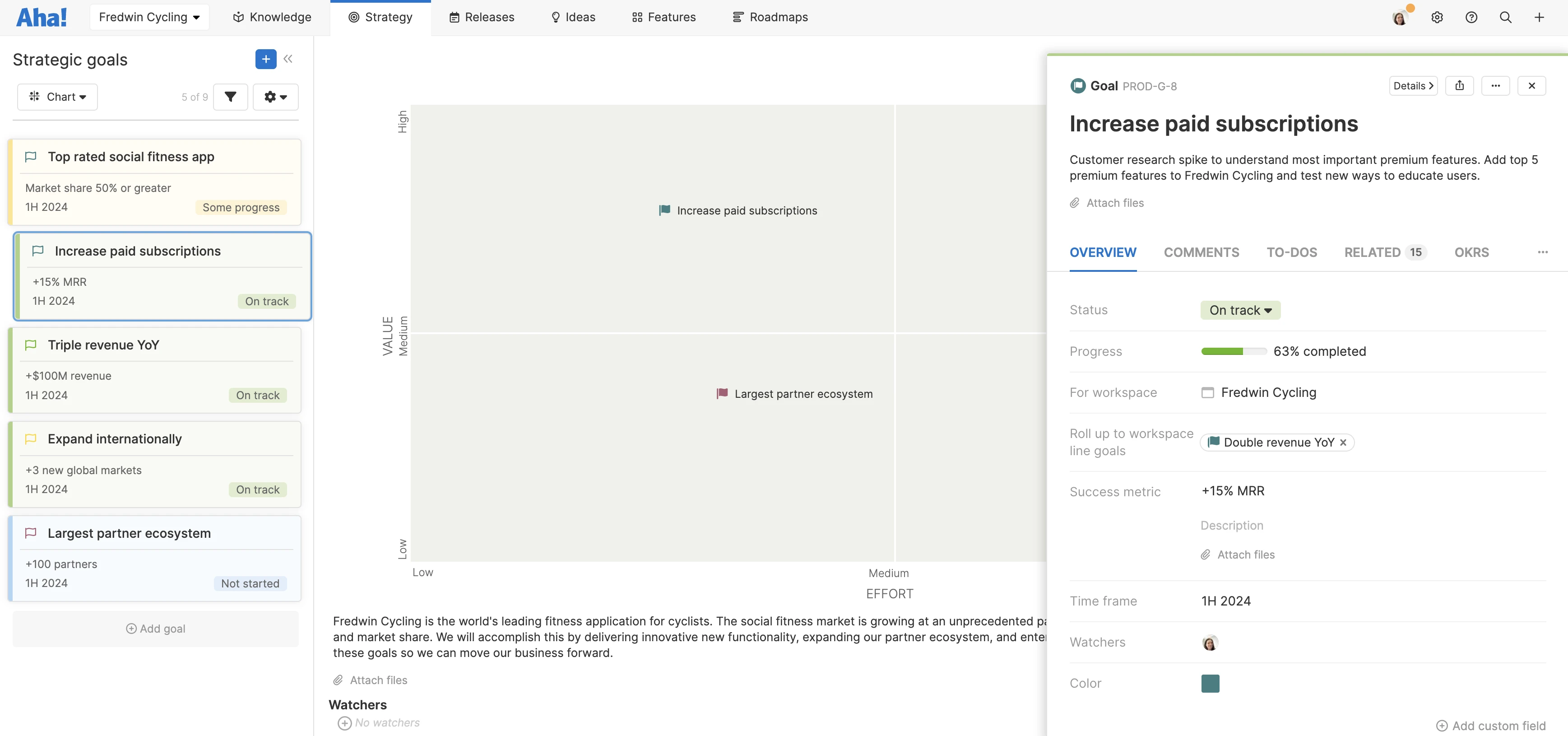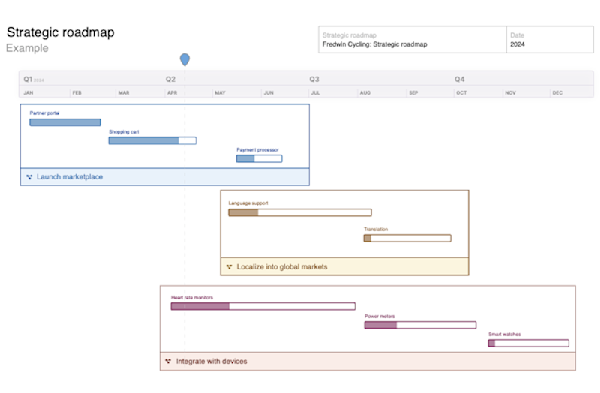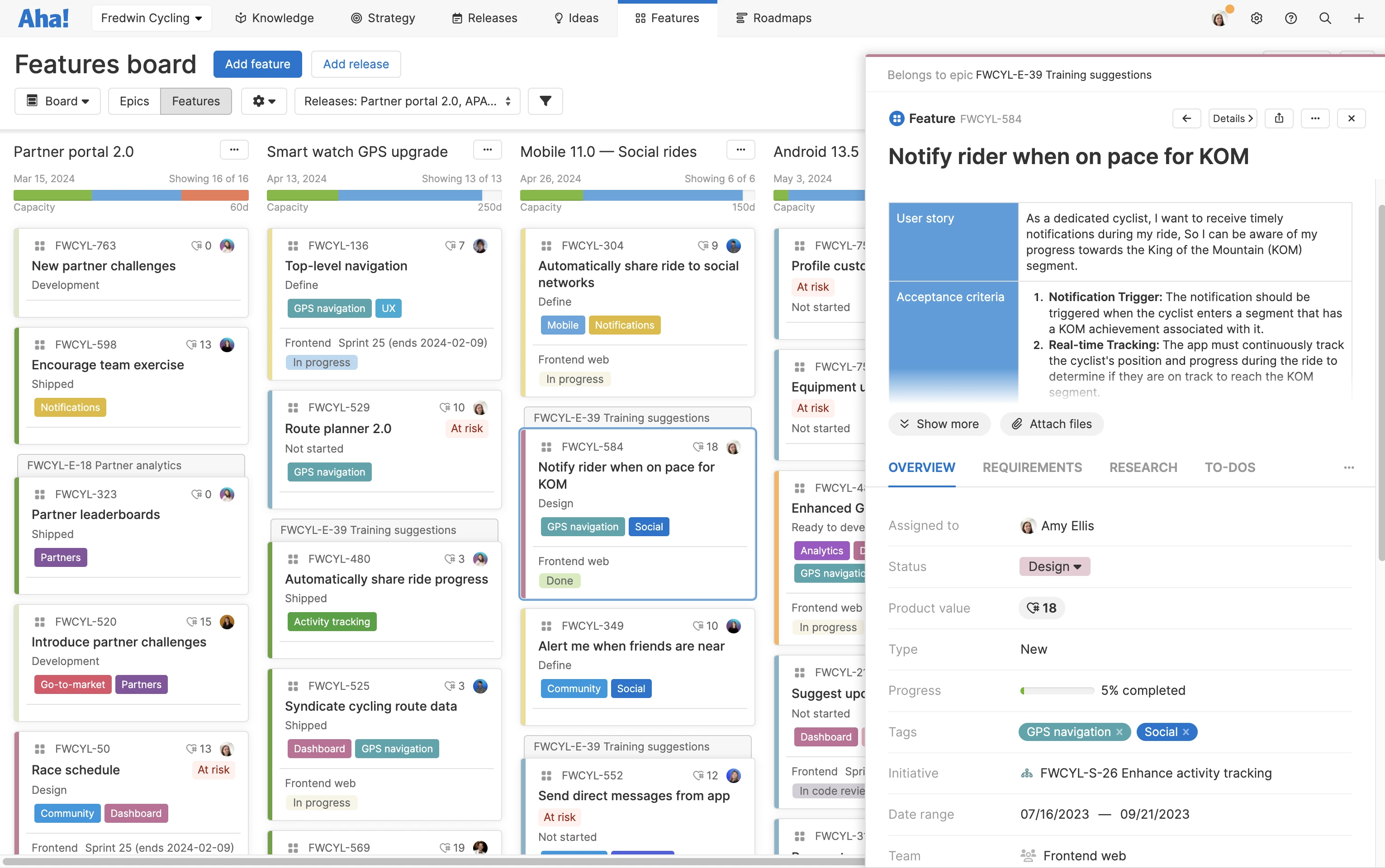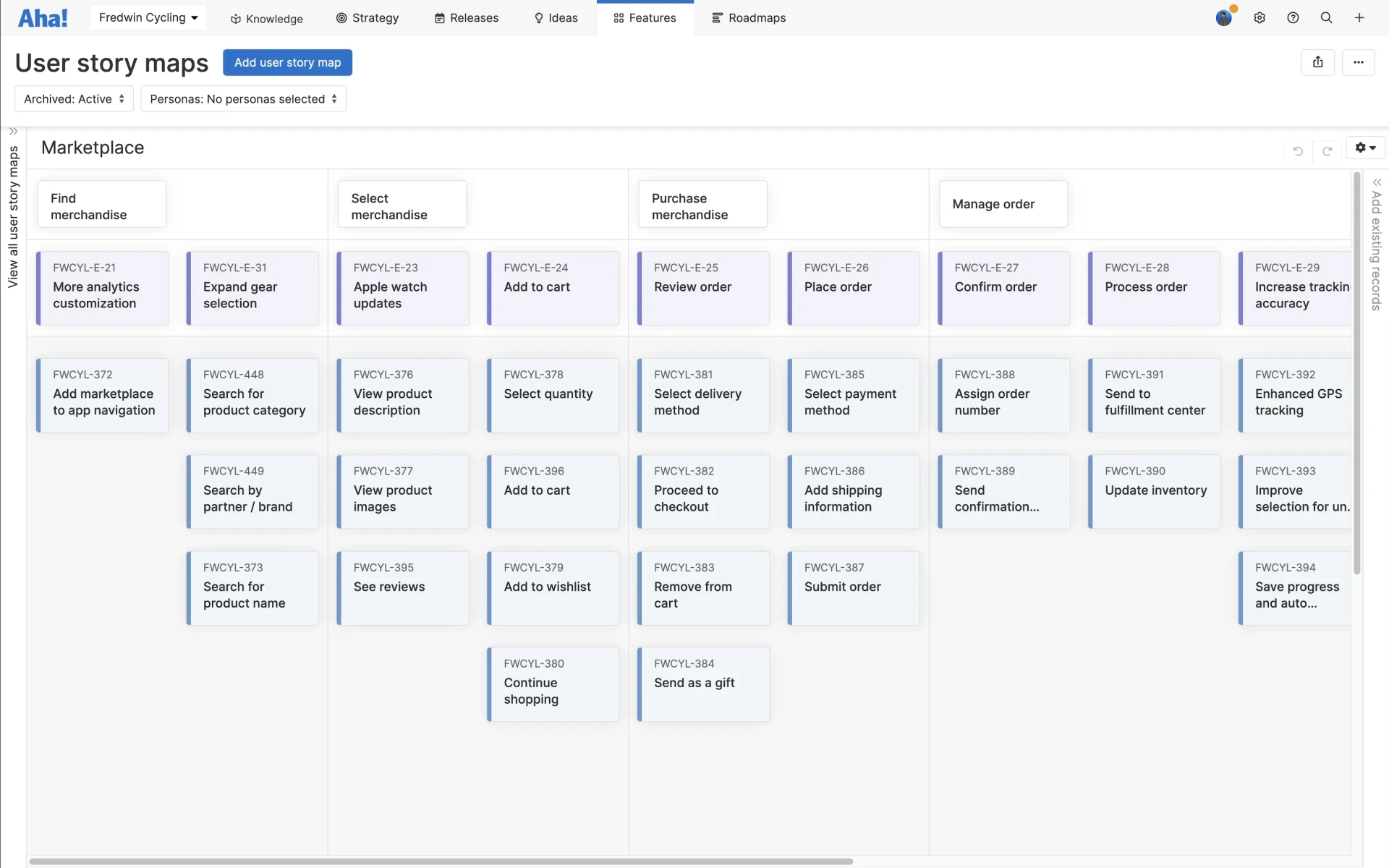Best practices, tips, and tools for agile product management
Last updated: August 2024
Agile product management is precisely what it sounds like. Product development teams set product strategy and create product roadmaps in an agile environment. It encourages an adaptive approach to product planning and implementation so organizations can quickly respond to feedback and build products that customers love.
At its core, agile product management is a response to the widespread use of agile software development methodologies, such as scrum or kanban. These methods emphasize evolutionary development, early delivery, and continuous improvement. If you are new to agile, you might find it helpful to read our agile development guide about the history and principles of agile.
Agile product managers love Aha! Roadmaps. Try it free for 30 days.
Use the following links to jump ahead to a specific section:
What is agile product management?
How do we define agile product management? It is a product development philosophy that emphasizes a flexible and human — rather than a rigid process- or tool-oriented — approach to defining product strategy and carrying out work. Teammates focus heavily on customer feedback to make improvements and adjust roadmaps throughout the product management process. This creates more responsive teams, leads to quicker iterations, and creates a more lovable experience overall.
Related:
Benefits of agile product management
Agile redefines how product managers think about planning and building products. Traditionally, new customer experiences were planned, designed, implemented, and tested in a step-by-step way. This meant that new functionality was delivered sequentially. Once requirements were defined and handed off to the development team, it was difficult to make any changes. The failure rate of large-scale and lengthy software development projects drove the need for a more fluid approach. Teams needed a way to adapt to customer feedback and other learnings.
Agile provides a more flexible approach than traditional software planning and development. Products are built in short increments, giving product managers the opportunity to adjust the plan along the way. Here are some of the key benefits of agile product management:
Learn from customers throughout the product lifecycle
Continuously adjust the near-term roadmap to meet customer needs
Deliver value to customers in an incremental way
Respond to new and changing requirements
Collaborate with engineering to quickly deliver work
Related:
Agile product management practices
Being a product manager in an agile environment requires flexibility. This is because less time is spent defining the product upfront, so product managers must continuously adapt the product roadmap and reprioritize what to build based on customer feedback.
Here is an overview of how the core product management responsibilities are carried out in an agile environment:
Set product strategy
Setting a clear strategy is crucial in an agile environment. Product managers are responsible for defining the product vision and long-term direction. This requires working closely with customers to understand their pain points, researching the market, and setting strategic product goals and initiatives that align with overall business objectives.
Understand customer needs
Agile methodologies focus on delivering value to customers quickly. This means product managers must stay close to customers to understand exactly what they want. One tenet of agile is gathering feedback early and often to ensure the product delivers the expected benefits to users.
Create the product roadmap
An agile roadmap sets a near-term plan for achieving the product strategy. It typically represents monthly or quarterly commitments and is adjusted regularly to accommodate change. Product managers build the roadmap around strategic themes of work that maintain the overall vision and deliver meaningful value to customers.
Related:
Prioritize features
Agile product management involves continuously prioritizing features for implementation — maintaining the product backlog, defining user stories, and deciding what to build and when. Product managers work closely with engineers to estimate features, define requirements, and collaborate on a release plan based on the team’s capacity.
Release customer experiences
Agile teams strive to frequently deliver new customer experiences. The cadence can vary from quarterly to monthly, weekly, or even daily. Regardless of the frequency, product managers are responsible for delivering a Complete Product Experience (CPE) to customers. This involves working closely with engineering, IT, marketing, sales, and support to ensure organizational readiness.
Measure product success
Product success in an agile environment is measured by how customers interact with products and services and the impact on customer acquisition, growth, and retention. Measures of success include customer engagement (such as time in product and returning users), conversion rates, customer churn, and the frequency of feature updates.
If you are curious to learn more about how product management and agile development go together in practice, check out The Aha! Framework. It is our proven model for combining strategic planning and agile delivery to drive successful product development.
Related:
Roles and responsibilities in agile product management
Agile methodologies introduce a number of additional roles to structure how teams work together. Since we already described the core responsibilities of a product manager in agile, let’s look at some of the other roles that are explicitly defined in the scrum framework.
Development team An agile development team is a cross-functional and self-organized group of people that have the necessary skills to produce a working, tested increment of a product. The team often includes skills such as design, development, testing, and delivery.
Product owner A product owner is responsible for maximizing the value of the product created by the development team. This internal-facing role gathers technical requirements, refines the product backlog, and details user stories.
Scrum master The scrum master is a servant-leader who is responsible for coaching the team in agile practices. This role guides the team through the agile process to complete the work the product owner prioritizes. Scrum masters remove impediments that keep the team from doing their work.
Stakeholders Stakeholders can be anyone affected by the development of a software project. This includes a broad category of people, such as end users, executives, IT, operations, portfolio managers, and support.
Related:
Product manager vs. product owner
It is important to understand that these are roles rather than job titles. This can create confusion about the differences between a product manager and a product owner. In reality, the product manager is the product owner. This is because the responsibilities of a product owner fundamentally cover the internal-facing work a product manager does — working closely with engineering to build new customer experiences.
Some organizations choose to break out product management work into two roles. In this situation, the product manager assumes an external focus, while the product owner details user stories and participates in scrum rituals. Both roles are important to the overall success of a product and must work closely together to build products that customers love.
The table below explains how the responsibilities of a product manager and product owner differ when they are discrete roles:
Responsibility | Product manager | Product owner |
Define the product vision and set the long-term direction | X | |
Conduct market and competitive research | X | |
Work closely with customers, prospects, and partners to capture their needs | X | |
Build the near-term product roadmap | X | |
Prioritize and score features based on customer and business value | X | |
Communicate the product vision and business intent to the development team | X | |
Lead technical requirements gathering, consulting with internal stakeholders | X | |
Refine the product backlog, breaking down epics and estimating user stories. | X | |
Attend scrum meetings including sprint planning, standups, and retrospectives | X | |
Document user story details, create mockups, and work with UX on design | X | |
Document new features for implementation | X | |
Support non-technical teams (sales, marketing, support) | X | |
Write acceptance criteria | X | X |
Attend iteration demos | X | X |
Demonstrate the latest iterations to customers and gather feedback | X | X |
Agile product management tools
As you have learned in this guide, agile product management requires a specific way of thinking and working. There are many tools you can use to help you carry out your core product management responsibilities in an agile way. Here are a few of the most common ones.
Goal matrix
Setting measurable, time-bound goals helps product managers prioritize features that deliver strategic value. Use a matrix to visualize your goals so everyone understands the “why” behind your product decisions.

Planning board
A visual planning board is useful for organizing features into backlogs and upcoming releases. This makes it easy to define and prioritize features as you prepare for development.





